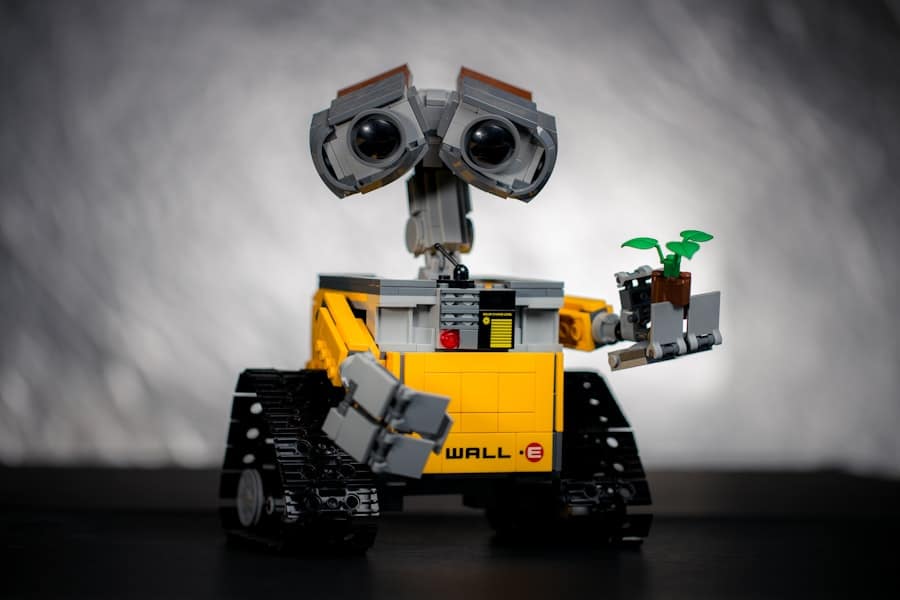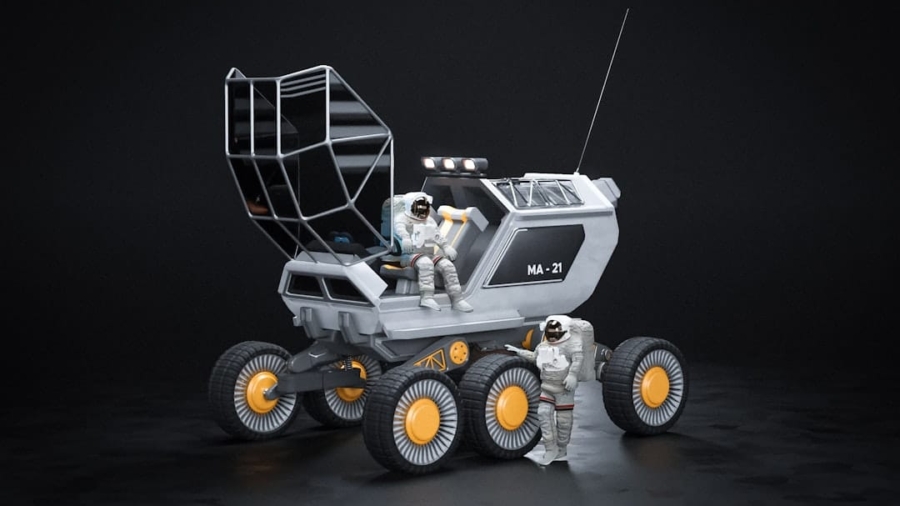Planetary exploration has captivated human imagination for centuries, serving as a testament to our innate curiosity about the cosmos. The quest to understand celestial bodies beyond Earth has evolved from mere observation through telescopes to sophisticated missions involving robotic spacecraft and landers. This evolution reflects not only advancements in technology but also a growing recognition of the importance of exploring other planets, moons, and asteroids.
The motivations behind planetary exploration are multifaceted, encompassing scientific inquiry, the search for extraterrestrial life, and the potential for future human colonization of other worlds. The significance of planetary exploration extends beyond the immediate scientific gains; it embodies humanity’s desire to push boundaries and expand our knowledge of the universe. As we venture into the solar system and beyond, we are not only seeking answers to fundamental questions about our origins and the nature of life but also preparing for potential challenges that may arise as we consider the long-term survival of our species.
The role of robotic exploration has become increasingly prominent in this endeavor, providing a means to gather data from environments that are inhospitable or unreachable by humans.
Key Takeaways
- Planetary exploration involves the study of planets, moons, and other celestial bodies to understand their composition, geology, and potential for supporting life.
- Robotic exploration of other planets began in the 1960s with the Soviet Union’s Luna and Venera missions, followed by NASA’s Mariner and Viking missions.
- Robots used in planetary exploration include rovers, landers, orbiters, and drones, each designed for specific tasks such as surface exploration, sample collection, and remote sensing.
- Advantages of robotic exploration include cost-effectiveness, reduced risk to human life, and the ability to access harsh environments, while limitations include limited mobility and the need for human intervention.
- Current and future missions involving robots include NASA’s Perseverance rover on Mars and the planned Europa Clipper mission to Jupiter’s moon Europa, showcasing the continued advancement of robotic technology in space exploration.
History of Robotic Exploration
The history of robotic exploration is a narrative rich with innovation and ambition, beginning in the mid-20th century when the space race ignited a fervor for discovery. The launch of Sputnik 1 by the Soviet Union in 1957 marked the dawn of the space age, but it was not until the 1960s that robotic missions began to explore other celestial bodies. The Mariner program, initiated by NASA, was pivotal in this regard.
Mariner 4, launched in 1964, became the first spacecraft to successfully fly by Mars, sending back images that revealed a cratered surface and ignited interest in further exploration of the Red Planet. As technology advanced, so did the complexity and capabilities of robotic missions. The Viking program in the 1970s sent two landers to Mars, equipped with scientific instruments designed to analyze soil samples and search for signs of life.
These missions laid the groundwork for future explorations and established protocols for conducting experiments on other planets. The success of these early missions demonstrated that robots could perform tasks in extreme environments, paving the way for more ambitious projects such as the Voyager missions, which provided invaluable data about the outer planets and their moons.
Types of Robots Used in Planetary Exploration

Robotic exploration employs a diverse array of robotic systems tailored to specific mission objectives and environmental conditions. Rovers, such as NASA’s Curiosity and Perseverance, are designed to traverse planetary surfaces, equipped with advanced mobility systems and scientific instruments. These rovers can analyze soil and rock samples, conduct atmospheric studies, and capture high-resolution images, all while navigating challenging terrains.
For instance, Curiosity has been exploring Gale Crater since 2012, providing insights into Mars’ geological history and its potential to support microbial life. Orbiters represent another critical category of robotic explorers. These spacecraft are designed to study planets from above, utilizing remote sensing technologies to gather data on atmospheric composition, surface features, and climate patterns.
The Mars Reconnaissance Orbiter has been instrumental in mapping the Martian surface and identifying potential landing sites for future missions. Additionally, landers like the InSight mission have been deployed to study seismic activity on Mars, offering a glimpse into the planet’s internal structure. Each type of robot plays a unique role in expanding our understanding of planetary systems.
Advantages and Limitations of Robotic Exploration
Robotic exploration offers numerous advantages over human missions, primarily due to cost-effectiveness and safety considerations.
They can be deployed for extended periods without the need for life support systems or provisions for human health.
However, robotic exploration is not without its limitations. While robots can perform a wide range of tasks autonomously or under remote control, they lack the adaptability and problem-solving capabilities inherent to human explorers.
Complex decision-making in unforeseen circumstances can be challenging for robots, which rely on pre-programmed algorithms and instructions. Furthermore, communication delays between Earth and distant planets can hinder real-time responses to unexpected situations. For example, during the Mars rover missions, commands sent from Earth can take several minutes to reach their destination, complicating operations that require immediate adjustments.
Current and Future Missions Involving Robots
The landscape of planetary exploration is continually evolving with new missions that push the boundaries of what is possible with robotic technology. Currently, NASA’s Perseverance rover is actively exploring Mars, searching for signs of ancient microbial life and collecting samples for future return to Earth. This mission is particularly significant as it aims to pave the way for human exploration by testing technologies that could support human life on Mars.
Looking ahead, several ambitious missions are on the horizon. The European Space Agency’s Jupiter Icy Moons Explorer (JUICE) is set to launch in 2023 with the goal of studying Jupiter’s moons Europa, Ganymede, and Callisto. These moons are believed to harbor subsurface oceans that could potentially support life.
Additionally, NASA’s Artemis program aims to return humans to the Moon by 2024 while also deploying robotic landers to explore lunar resources that could facilitate future manned missions to Mars. The synergy between current robotic missions and future human endeavors underscores a strategic approach to planetary exploration.
Contribution of Robots to Scientific Discoveries

Robots have significantly advanced our understanding of planetary science through their ability to collect data that would otherwise be unattainable. The findings from robotic missions have reshaped our knowledge of planetary geology, atmospheres, and potential habitability. For instance, data from the Mars rovers have revealed evidence of ancient riverbeds and lake formations, suggesting that liquid water once existed on the Martian surface—a key factor in assessing its past habitability.
Moreover, robotic missions have provided insights into planetary atmospheres that inform our understanding of climate change on Earth. The study of Venus’ thick atmosphere through missions like ESA’s Venus Express has offered parallels to Earth’s greenhouse effect, enhancing our comprehension of atmospheric dynamics across different worlds. The discoveries made by robots extend beyond mere data collection; they challenge existing theories and inspire new lines of inquiry within planetary science.
Ethical and Legal Considerations in Robotic Exploration
As we continue to explore other planets with robotic technology, ethical and legal considerations become increasingly pertinent. The Outer Space Treaty of 1967 establishes fundamental principles governing space exploration, including the prohibition of territorial claims on celestial bodies and the responsibility of nations to avoid harmful contamination of extraterrestrial environments. However, as robotic missions become more frequent and ambitious, questions arise regarding planetary protection protocols and the potential impact on indigenous ecosystems.
The ethical implications extend beyond environmental concerns; they also encompass issues related to data ownership and sharing among nations involved in space exploration. As international collaboration becomes essential for successful missions, establishing clear guidelines for data sharing and intellectual property rights is crucial to ensure equitable access to scientific discoveries. Furthermore, as we consider future human exploration alongside robotic missions, discussions about the rights of potential extraterrestrial life forms must be addressed.
Potential for Human-Robot Collaboration in Planetary Exploration
The future of planetary exploration may increasingly hinge on effective collaboration between humans and robots. As robotic technology continues to advance, integrating human oversight with autonomous systems could enhance mission success rates while minimizing risks associated with human presence in hostile environments. For example, robots could perform preliminary surveys or conduct routine maintenance tasks on Mars while humans focus on more complex scientific investigations.
This collaborative approach is already being explored in various contexts on Earth through teleoperation systems that allow humans to control robots remotely in hazardous environments. Such technologies could be adapted for use on other planets, enabling astronauts to leverage robotic assistance during their explorations. By combining human intuition with robotic precision, we can maximize our ability to explore distant worlds while ensuring safety and efficiency in operations.
In conclusion, as we stand on the brink of a new era in planetary exploration driven by robotic technology, it is essential to recognize both the achievements made thus far and the challenges that lie ahead. The interplay between robots and human explorers will shape our understanding of the universe while raising important ethical questions about our responsibilities as we venture into uncharted territories.
In the realm of planetary exploration, robots have become indispensable tools, offering unprecedented insights into the mysteries of our solar system. The article “Exploring the Role of Robots in Planetary Exploration” delves into the technological advancements and challenges faced by these mechanical explorers. For those interested in the technological aspects of robotics and animation, a related article worth exploring is Best Software for 3D Animation. This article provides an overview of the top software options available for creating detailed and realistic animations, which are crucial in simulating and planning robotic missions in space exploration.
FAQs
What is the role of robots in planetary exploration?
Robots play a crucial role in planetary exploration by being able to access environments that are too dangerous or inhospitable for humans. They can gather data, take samples, and perform tasks that help scientists understand the conditions of other planets.
How do robots contribute to our understanding of other planets?
Robots are equipped with various instruments and sensors that can collect data on the atmosphere, geology, and other environmental factors of other planets. This data helps scientists analyze and understand the conditions of these planets.
What are the advantages of using robots for planetary exploration?
Robots can operate in extreme conditions, such as high radiation, extreme temperatures, and low gravity, which makes them ideal for exploring other planets. They also do not require life support systems, making them more cost-effective than sending humans.
What types of robots are used in planetary exploration?
Various types of robots are used in planetary exploration, including rovers, landers, and orbiters. Rovers are equipped with wheels and can move across the surface of a planet, while landers and orbiters are stationary and provide different types of data collection.
What are some examples of successful robotic missions in planetary exploration?
Some successful robotic missions in planetary exploration include the Mars rovers Spirit, Opportunity, and Curiosity, as well as the Mars lander InSight. These missions have provided valuable data and insights into the conditions of Mars.

